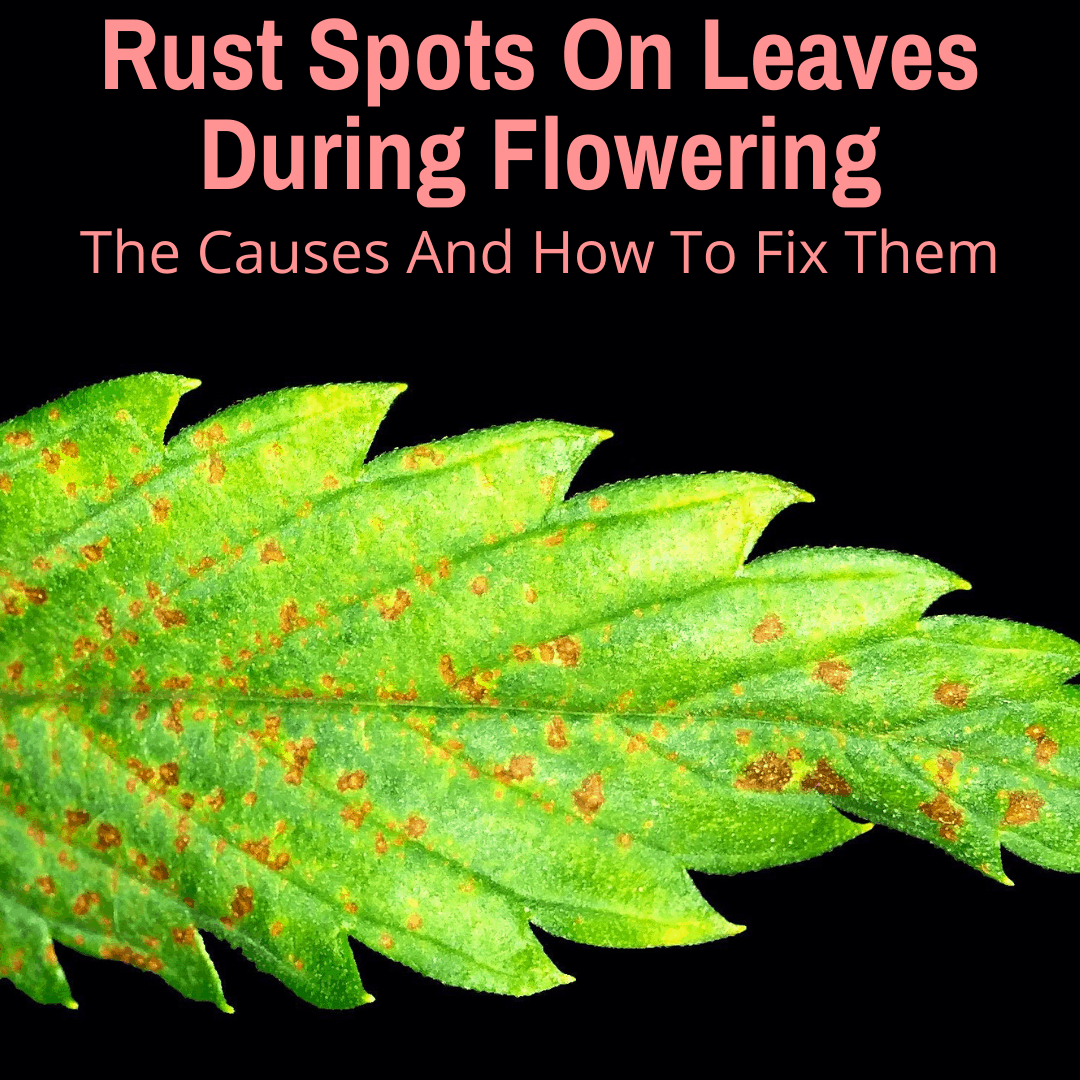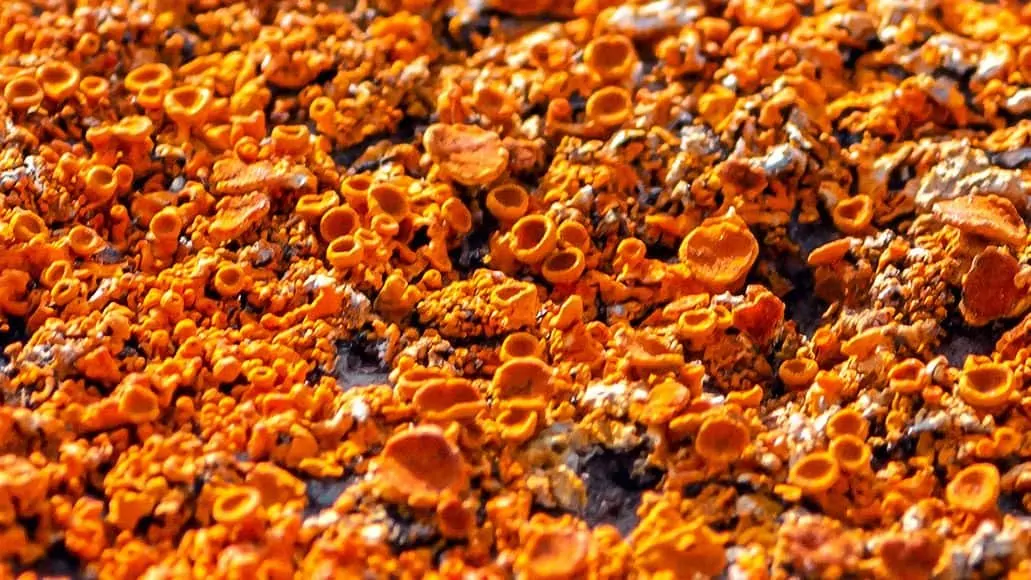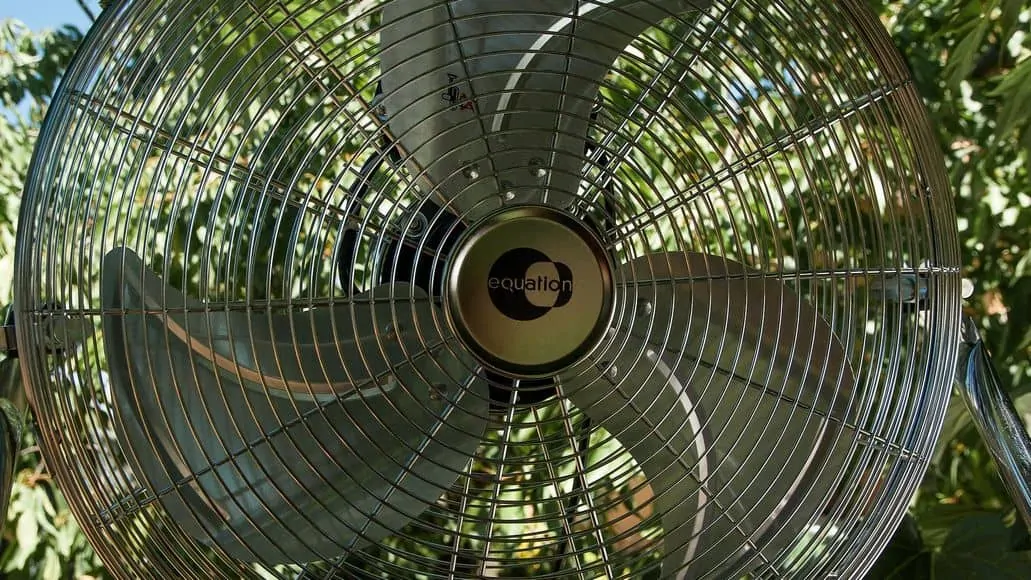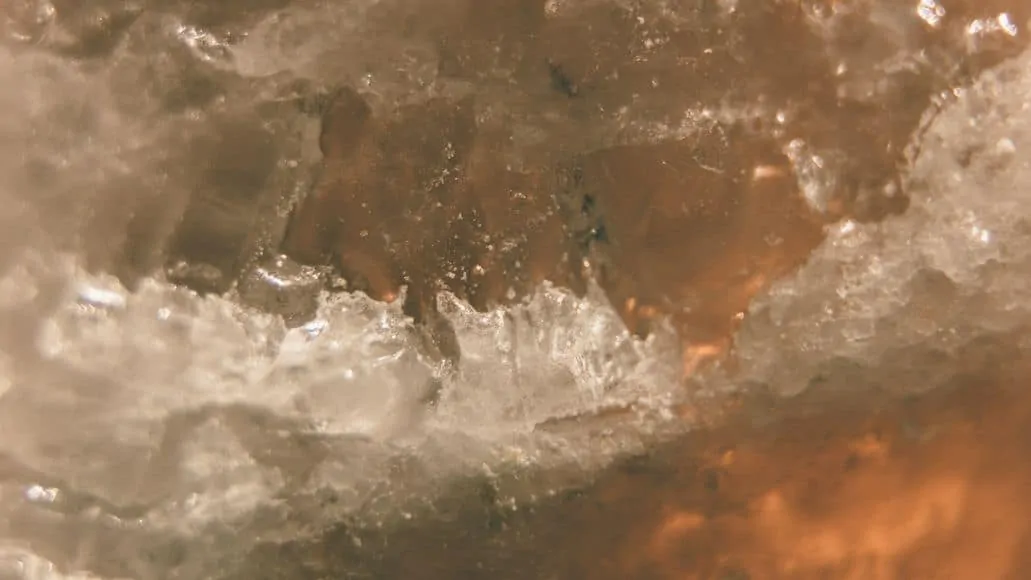 If you’ve been trying to figure out what rust spots on leaves during flowering indicate, you’ve probably come across a number of wildly different explanations.
If you’ve been trying to figure out what rust spots on leaves during flowering indicate, you’ve probably come across a number of wildly different explanations.
That’s because these spots can have a few different causes.
But two of them are by far the most common, so we will cover those here.
Generally, rust-colored spots on marijuana leaves indicate a fungal infection or a deficiency in magnesium or calcium. Nutrient burn is also a possible culprit.
Let’s see how you can figure out which issue your plants are having and what you need to do to fix it.
Contents
Brown Spots On Leaves During Flowering Of Cannabis
As mentioned, these brown or rust-colored spots on your marijuana leaves are usually the result of a fungus or a calcium or magnesium deficiency, but they can also result from nutrient burn. Let’s begin with the fungus.
Rust Fungus

Rust fungus can affect just about any green and leafy plant. It turns leaves a reddish, brownish or even yellowish color. Its spores rub off at the slightest touch or wisp of air, meaning they spread quickly and easily to new areas of the plant, or to new plants.
I don’t know what proportion of cases where rusty spots appear on cannabis leaves are caused by rust fungus, and what proportion are caused by a nutrient deficiency.
But I do know that many cases where a fungus is the cause are misdiagnosed, and growers mistakenly add nutrients to try and solve the problem.
If possible, try to determine what problem you have, before you attempt to solve it. So how can you tell if your plants are being attacked by a rust fungus?
How to Determine If Your Plants Have Rust Fungus
Because this fungus has spores that spread easily, you can usually test for fungus by simply rubbing a finger on the affected spots. If some of the rust rubs off onto your fingers, then it is rust mold. If it does not rub off, it is most likely an problem with nutrients (see below).
What Causes Rust Fungus
Rust fungus is airborne and is usually around. If you give it the right conditions to grow it will. What are the right conditions?
This fungus loves temperatures from 60° to 80° F with high humidity. In other words, it likes the growing conditions of marijuana. And it usually takes hold during the flowering stage, because that is when your plants are focusing their energy on reproduction and are thus at their most vulnerable.
If rust thrives in the same environmental conditions as cannabis, what can you do to prevent it?
How to Prevent Rust Fungus
The most important factor for preventing the growth of fungus is ventilation. Fungi love humid conditions where moisture is always present.
If you ventilate your grow room well, and also lower the temperatures somewhat at night, you can ensure that any dew that is present dries out, hindering the growth of fungus.

Not only should your marijuana growing room be well ventilated, but you should also make sure that the air can circulate easily among the plants.
Lollipopping cannabis plants can help keep humidity down and prevent fungal growth. This is a practice whereby you trim off the lower branches prior to flowering.
It is also important to not crowd too many plants together and you might even want to remove some leaves so that air can flow better past the plants. Make sure you get the right sized grow tent for the number of plants you have.
You should also always water during the daytime, so that the water has a chance to evaporate. Finally, make sure no leaves are touching the soil. Remove any leaves that come close.
But what can you do if it is too late? How do you get rid of rust fungus after it has taken hold?
How To Get Rid Of Rust Fungus
The first thing you should do is remove any infected leaves. And do not simply throw them in a trash can in the grow room. Remove them entirely and get them far away. Ideally, burn them.
Once you have done that, you want to treat your plants with some kind of fungicide. We caution against using chemical sprays and recommend using natural remedies instead, for obvious reasons.
One of the best natural remedies is sulfur. Use a sulfur spray to spray the plants every 10 days or so. Other natural sprays to try are a baking soda mix with 1 teaspoon to a quart of water or a garlic spray with a half cup of minced garlic in a quart of water (let it sit for at least 24 hours before using).
It is a good idea to mix up the type of fungicide you use, so that the fungus does not develop an immunity to any one kind.
What if none of this works to fix the problem? What if new leaves continue to exhibit these rust-colored spots? If this is the case, you may not have a fungus on your hands at all. It may be a nutrient deficiency or nutrient burn.
Magnesium Or Calcium Deficiency (Or Lock Out)

Rusty brown spots can also be a sign of a magnesium or calcium deficiency, though they more commonly result from a lack of magnesium than calcium.
Generally, a minor cal mag deficiency will not negatively affect the flowering of your weed plants, but when they are flowering, the symptoms of a deficiency will get worse (since the plant uses up more of these nutrients when flowering).
However, if you do not rectify the issue, the deficiency will worsen. What starts out as a few rust spots on the middle-aged leaves (those just below the top of the plant), ends up spreading to all leaves. At this point, flower production is reduced.
Of course, if you rectify the deficiency, but it turns out that wasn’t the issue at all, you will make the problem worse. This can happen when calcium and magnesium are locked out. We’ll get into that below.
First, we want to make sure the rust spots are actually due to the plant not getting enough magnesium or calcium (whether it is because you are not feeding it enough or because those nutrients are locked out). To determine that, look for other symptoms that commonly (but not always) appear as a result of a deficiency of Mg or Ca.
Additional Symptoms Of A Mg or Ca Deficiency
With a calcium deficiency, you will likely also notice the lower leaves starting to curl. In the case of insufficient magnesium, the leaves begin to turn yellow, while the veins remain green.
If you see either of these symptoms, cannabis leaves curling up or turning yellow, you know that your plants are not getting enough of one of these minerals. Thus, the issue is not a fungus.
But this does not necessarily mean you should give your plants more calcium or magnesium. They may be getting plenty, or even too much, but they are simply unable to absorb them.
Nutrient Lockout
Nutrient lockout is when the uptake of a nutrient is inhibited for whatever reason. There can be a number of causes for this, but the most common is the pH level.
Different nutrients have different pH ranges at which they are absorbed best. If the pH goes outside that range, that nutrient can no longer be absorbed. It is locked out.
For marijuana plants, you want to keep the soil pH at 6.8 (5.8 for hydro and other soil-less media). That is within the absorption range for every essential nutrient, meaning none of them are locked out.
Other possible causes for nutrient lockout can be a very wet and/or cold root environment, or a high ratio of potassium, ammonia or calcium to magnesium, or vice versa for calcium.
Magnesium or calcium lockout is probably the most common reason for a deficiency in either of those nutrients, so you want to make sure this is not the issue in your case, before increasing the nutrient amounts. The next section covers that.
How to Fix A Ca or Mg Deficiency
The first thing you need to do is rule out a nutrient lockout. To do this, test the soil pH, by testing the water runoff after it has seeped through the pot.
A digital pH meter like this one is best, but you can also use testing papers, if the meter is out of your budget. Just don’t use soil testers, since they are generally not very accurate.
Calcium is best absorbed at a pH of 6.5 of 9.1 in soil (5.4 to 5.8 without soil) and magnesium at a pH of 6.5 to 9.1 in soil (5.8 to 9.1 for soil-less growing). If your pH is outside those ranges, that is likely the reason for your nutrient deficiency.
Adjust the pH to fix the problem. As mentioned, the best water for cannabis plants has a pH of 6.8 in soil and 5.8 for soil-less media.
If your pH is fine, then it is likely that you are not giving your plant enough calcium or magnesium. Increase the amount of the lacking nutrient and monitor the plant to see the effects. Remember that too much of one of these two nutrients can result in the other being locked out.
Nutrient Burn
If the issue is not the result of a fungus or a nutrient deficiency, it could be the result of nutrient burn. This simply means your plants are getting too many nutrients.
To fix this issue, you want to first do a flush. This means giving you weed plants plain water to flush the remaining nutrients out of the soil. Once there are no nutrients left, you will notice your plants starting to droop.
Ideally, you want to stop flushing before this happens and start adding nutrients back in. Give your plants half of the amount they were getting before and monitor the effects. Increase or decrease the amount as needed. Learn how to flush weed plants here.
Rust Spots On Cannabis Leaves: Final Thoughts
Rust spots on leaves during flowering can be the result of a few different issues. The first step is to figure out which issue your plants have. When you know that, you can go about fixing it.
If it is a nutrient issue, there is unfortunately no exact answer for how much or how little of each nutrient your plants need. It depends on too many different factors, that you really just need to keep experimenting with the amounts until you get it just right, where the plants are no longer showing rust spots or other signs nutrient burn or a nutrient deficiency.
The good news is that cannabis is a resilient plant, so even if you do a lot of things wrong, it will still grow and produce. It just won’t produce as much as a perfectly healthy plant would, which is why it pays to keep working at it.
Phillip Mendiola says
very good information !!!!
Danny says
I was having problems identifying my issue, and this rust spot collection was just what I needed.
Great informative read.
Thanks!
Steven says
That’s great, I’m happy to hear it helped!
Ricardo says
Hi, what about if the rust isn’t spots but instead the rust colour is in-between the veins and the serrated edges of the leaves point upwards and look a dark purple and the very tips are curling up and over and are also rust coloured?? My plants were fine untill flower then over night this started happening? There isn’t a picture I can find that looks like what is happening here, in all my years of growing I havnt seen this? the only major change I have done is gone led lights instead of hps, I’m using the optic 4 in my 4×4 I had the optic 6 but that is way to powerfull for a 4×4 and the plants suffer badly, the optic 4 has done the job but now I’m wondering after the plant stretching are they now to close (25 inches) and that’s mabie the cause of this strange problem
Rick Bradshaw says
Yes. I used LED and you need to turn them down if that is happening. I have my Mars 3000 at 40% now. Mine were doing the same thing and this fixed my issue. I use advanced nutrients with extra calories Mag because of the LED leaching some of that out
Ricardo says
Thanks for your reply, my lights are not dimmable, I’ve got the gen 3 version, I have upped the cal mag tho and hopefully that will balance things out it’s also to late to start bending things down so I’ll just have to live with it and on my next run keep things even lower
Anonymous says
Thanks best info. I have found
Jorge says
Good info
Anon says
As soon as lower leaves yellowing was mentioned I felt a bit of relief. Lower leaves did start yellowing and I just assumed they needed a little more nitrogen, then I started noticing the brown spots. Still not entirely sure what it is but I’ll flush my pots with ph’d water, then give a lower nutrient feed and go from there. This seems to happen every single time and my plants end up looking awful towards the end, I don’t even like sharing pictures at that point. The buds are still very well developed, hard, sticky, and smelling amazing. The leaves just look awful.
Amber says
What do you use for nitrogen my plants look like shit
Nick Brengle says
Will removing all of the affected leaves work?
Anonymous says
If pH is the issue, how long should it be monitored and how many hours apart is best when monitoring?
Ron says
This page really help me out thank you this need more pages likes on the net ..
Chelsea says
This page is truly so helpful i normally spent forever trying to figure out whether or not a page is giving me the right information in regards to my question, I feel as though this page does that and so much more
SparksKUSH says
Im have the same issuse my leaves have like orange spots i did the fungi test and nope no stains in my fingers. Im confused whether its nutrient burn or not enough nutrition
Sly says
You have to test the ph level before doing anything.
Ricardo says
Hi, what about if the rust isn’t spots but instead the rust colour is in-between the veins and the serrated edges of the leaves point upwards and look a dark purple and the very tips are curling up and over and are also rust coloured?? My plants were fine untill flower then over night this started happening? There isn’t a picture I can find that looks like what is happening here, in all my years of growing I havnt seen this? the only major change I have done is gone led lights instead of hps, I’m using the optic 4 in my 4×4 I had the optic 6 but that is way to powerfull for a 4×4 and the plants suffer badly, the optic 4 has done the job but now I’m wondering after the plant stretching are they now to close (25 inches) and that’s mabie the cause of this strange problem
Amber says
What do you use for nitrogen my plants look like shit
Joey says
When you described how it happens in the leaves just below the top growth that eventually spreads down the plant, that nailed it for me. Had this show up bad on my very first Hydro grow & then suddenly now on my second hydro, & right from the start on my baby plants! Ugh!! I am using an SF2000 & I switched to distilled water this time as well, so I think the combination is perhaps why it is showing up right from the beginning where as last time it began while I was in flower. I have now reached double the CalMag & also slightly increased humidity. Still watching closely but this site makes me feel like I’m in the right direction as my PH, PPM, temp, oxygen, etc…. They’re all about exactly where they should be. Just need to remember to have fun with it & know that one day I’ll get it right. Thanks for the help! 🙂
Scott Chenworth says
Hello, all. I am having the aforementioned issue with only one of my three outdoor plants. I pretty much ruled out a fungal outbreak, as the proximity to the other plants is close enough to have spread, so we go to nutrient deficiencies or lock out. So here is my question……..If i have used the exact same EVERYTHING for all three plants, why is this only happening to one? The only thing i am left with, and the singular difference is the container. The other two are in some new synthetic rubber tubs, while the affected plant is in a 5 gallon bucket, with questionable drainage. In your article I did indeed see something pertaining to excessive moisture, so could it be too much residual water resting in the bottom of this container? You guys are doing really well here, i refer to your site more often than any others for my growing concerns, thank you so much!!
Steven says
If the bucket is the only difference, your deduction makes sense. I would definitely try adjusting the water on the affected plant and see if that helps.
Aaron D says
Manganese Deficiency cause Rust Spots too just alittle FYI too much Nitrogen does it too